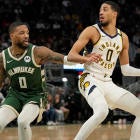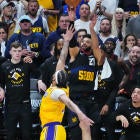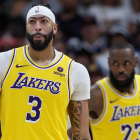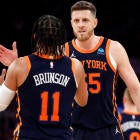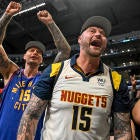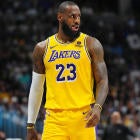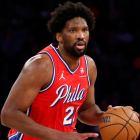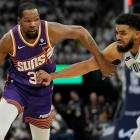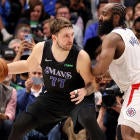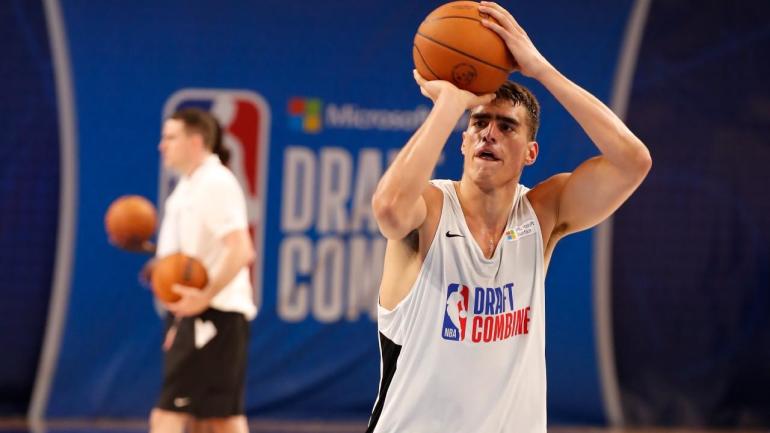
The first NBA Draft Combine held since 2019 did not disappoint as prospects from across the country and around the globe gathered in Chicago last week to showcase themselves in front of NBA decision-makers, scouts and media. While top-five projected picks Cade Cunningham, Evan Mobley and Jalen Suggs were not among the more than six dozen participants at the combine, it was nonetheless a meaningful experience that moved the needle and shook up big boards for teams.
And with just over a month until the draft, it provided a setting for firsthand evaluations in competitive settings -- the last one at that large of scale until the 2021 NBA Draft on July 29.
With the event behind us, let us take one look back in the rearview mirror to reflect on some of the big winners and losers from this year's combine.
Winners: Potential stay-or-go prospects
While the combine is a forum where scouts can get a close look at every player, there was a heightened level of curiosity surrounding two players in particular who have for months been seen as toss-ups regarding their decision to stay in the draft or return to school: Alabama's Josh Primo and West Virginia's Miles McBride.
Primo played 22.4 minutes per game on an Alabama team that won the SEC regular season and postseason titles, flashing potential in spurts with his shooting ability to go with his great positional size. At the combine, he solidified his case as a potential first-rounder should he stay in, as he knocked down shots and looked comfortable playing a more hands-on role as a creator and scorer.
The same was true of McBride, the second-year Mountaineers guard who really flashed last season averaging 15.8 points per game. McBride was helped by his impressive measurables -- he stands just 6-foot-1 without shoes but had a plus-7.75 wingspan -- and even more by his confidence on the court. A deadeye shooter, his stroke looked pure as ever and his defensive prowess as a pressure point at the lead guard spot -- which really flashed at West Virginia -- again helped him impress folks in Chicago.
Both could wind up as top-25 picks in this year's draft and after entering the combine as prospects considered to be on the fence, it wouldn't surprise if both stay in the draft and wind up being selected in the mid-to-late first round.
The Magic have the No. 5 pick. Will they trade it, or will they use it to draft Jonathan Kuminga? Listen to the latest episode of Eye on College Basketball and subscribe for the latest on the NBA Draft.
Winners: G League Elite Camp breakthroughs
The G League Elite Camp is a three-day event held prior to the combine where prospects can play their way into the combine. The last time it was held in 2019, 11 broke through to the big show and five of them went on to be drafted.
Four players this year got called up and three in particular popped from those who were invited: South Carolina's AJ Lawson, Maryland's Aaron Wiggins and Ohio State's Duane Washington Jr. Each of the three brought something different to the table and impressed in different ways -- Lawson with his athleticism, Wiggins with his positional size and versatility, and Washington Jr. with his fearlessness as a slasher and scorer. Louisville's Carlik Jones, the fourth invitee, also looked the part at the G League Elite Camp, with his scoring ability separating himself.
Of the four, Wiggins might be the real breakthrough story because of his positional size, versatility and strengths showcased at the combine. He'll likely make the cut in CBS Sports' updated Top 60 rankings later this week.
Winners: Big leapers make a big impression
Two big leapers at the combine were big leapers on draft boards last week in Chicago. That list starts with Tennessee's Keon Johnson, who with a 48-inch vertical leap (!!) took a sledgehammer to the combine's previous record of 45.5 inches that stood for two decades.
😳 @Vol_Hoops' Keon Johnson jumped out of the gym at the NBA Draft Combine, setting a vertical record of 48 inches ✈️
— FOX College Hoops (@CBBonFOX) June 27, 2021
(via @NBADraft) pic.twitter.com/XolAqc1CBN
Texas big man Jericho Sims had a 44.5-inch vertical leap that tied with Hamidou Diallo's 2017 mark, making him top-three in the category of the combine's history. Sims also had a strong showing at the combine overall, dunking everything, finishing above the rim with ease and looking like a potential role-playing big whose game can project to the next level.
Johnson is a potential top-10 pick so the leaping ability wasn't a surprise, but it should help his stock. Sims, however, can really benefit from his performance overall and the leaping ability in Chicago might be a metaphor for his rising draft stock.
Losers: High-profile prospects sit out
While some of the draft's best opted not to participate in activities at the combine, likely with no fallout, there were others with question marks surrounding them who did the same -- a puzzling choice for prospects still with something to prove.
Arizona State's Marcus Bagley was one who showed up at the combine but may have been hurt by not showing out and instead sitting and watching. Simply put, teams want to see more from Bagley after an injury-riddled season allowed him to play in only 12 games. The 6-foot-8 frame and shooting ability has 3-and-D written all over it. But the sample size isn't ideal for someone with first-round potential.
Then there was Duke's Jalen Johnson, who quit the Blue Devils team midseason to prepare for the draft and also opted not to participate at the combine. Johnson really struggled at Duke. He was a record-scratcher in the halfcourt and his offensive limitations in those settings especially raised real concerns. Showing some progress at the combine might have done well for his stock. He's now one of the real unknowns in this draft, with his range anywhere between a top-10 pick to a late first-rounder.
Neither Bagley nor Johnson were definitively hurt by not participating in the combine. However, they certainly weren't helped, either. And with so many prospects boosting their stock in front of teams, it's plausible that they might be passed by others who competed in Chicago, with their non-participation leaving teams still wanting to see more.
Winners: Experienced scoring guards show their skill
Sophomore VCU guard Nah'Shon "Bones" Hyland headlined a loaded tier of scoring guards at the combine who impressed in front of the right people. Hyland in the combine's first game went for 17 points, five rebounds and four assists, showcasing his innate shot-making ability and potentially working his way into first round territory.
Iowa junior guard Joe Wieskamp also did well for himself at the combine punctuated by a 26-point, 10-rebound performance in the final game of the combine. Wieskamp also had a 42-inch vertical leap and a nearly 7-foot wingspan. His size, length and shot-making ability at Iowa and at the combine should be enough to get him drafted -- now it's just a matter of how high he'll climb.
Finally, Houston junior guard Quentin Grimes looked to be a winner from the combine, as he led the event in scoring. The former five-star guard transferred away from Kansas after the 2018-19 season but developed his skill at Houston, becoming a reliable knockdown shooter. That was a huge reason why he stood out at the combine and the combination of his size and feel for the game look projectable.
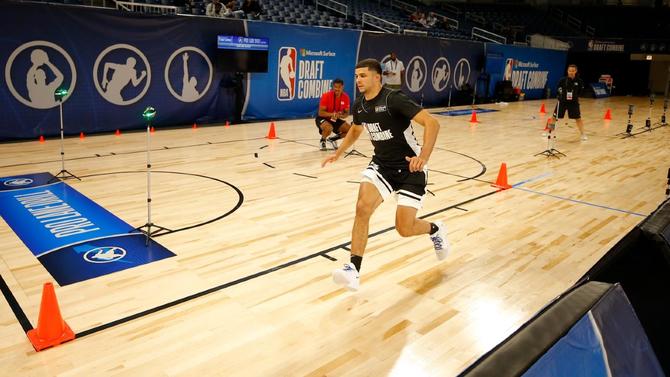
Losers: College stars struggle
Iowa's Luka Garza was the national player of the year last season for Iowa but was a DNP in the first game of the combine, the byproduct of a groin tweak, according to ESPN's Jonathan Givony. Garza showed up a more trimmed version of himself at 242 pounds, proving again that he is one of the draft's hardest workers. But there's still concerns about his agility and lateral quickness that still loom.
Max Abmas was the nation's leading scorer last season at Oral Roberts but he measured at 5'10.5"without shoes, making him the shortest player at the combine and likely taking the air out of any first-round potential he had after ending the season on a high note.
And then there's Creighton's Marcus Zegarowski. The preseason Big East Player of the Year is a gifted scorer and shot-creator who struggled shooting the ball in scrimmages -- less than ideal for a player whose pro promise is predicated on being an off-the-bench microwave scorer.
While all three college stars still have the potential to be drafted next month, the combine likely did not help any of their draft stocks entering the homestretch of the draft process.
Winners: Auburn's JT Thor thrusts himself into conversation
With an incoming Auburn class led by five-star big man Jabari Brown and UNC transfer Walker Kessler, playing time for incumbent starter JT Thor next season might've been tough to find. Now he might not need to try and find any. Thor made a huge impression at the combine with his smooth left-handed stroke. He's still in need of some polish around the edges of his game but the shooting, 6-10 frame and length all popped, potentially pushing him into first-round discussions where he hadn't previously been.














